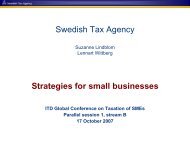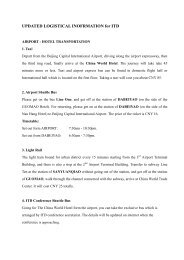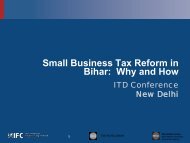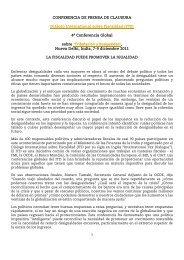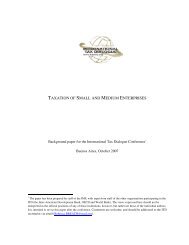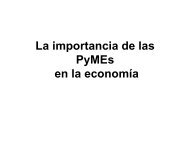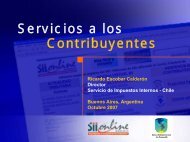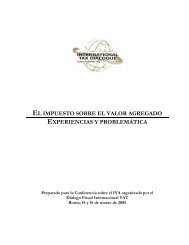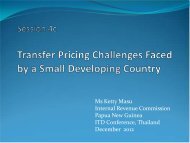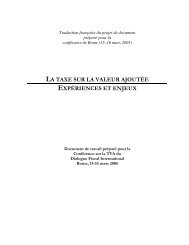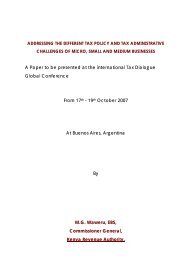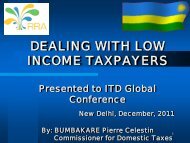Arcotia Hatsidimitris - International Tax Dialogue
Arcotia Hatsidimitris - International Tax Dialogue
Arcotia Hatsidimitris - International Tax Dialogue
You also want an ePaper? Increase the reach of your titles
YUMPU automatically turns print PDFs into web optimized ePapers that Google loves.
98 – ANNEX C<br />
The tax audit services will examine the company’s file which contains tax returns, including<br />
documents mentioning foreign companies (holding or subsidiaries), transactions that must be declared<br />
(like loan agreements), royalties, commissions or fees paid to foreign companies (which may be part<br />
of the same group), legal statutes (which can mention foreign shareholders or chief executive officer),<br />
previous tax audit reports, the group diagram etc.<br />
In a second review, the tax audit services will focus on further technical information: loss<br />
companies, important financial charges where loans are contracted with a shareholder or with an<br />
associated company, variations of royalties paid after a shareholder's change with no change of<br />
turnover, financial and economical ratios and other information.<br />
All of that information can be searched for on public or private databases, company websites,<br />
newspaper or economic journals.<br />
Typical process with transfer pricing expert<br />
Below is a description of a typical process used by the French national and international tax audit<br />
directorate (DVNI) when preparing a transfer pricing audit. Other ways can be followed but it is a<br />
good starting point to shorten time spent on transfer pricing cases.<br />
• Step 1: during the preparation of the annual tax audit planning, operational tax audit services,<br />
transfer pricing consulting team and tax audit head office draw up a list of the companies<br />
where transfer pricing issues have been detected; at this stage, they collect a first set of<br />
information on those companies.<br />
• Step 2: the planning board identifies companies to be audited where transfer pricing experts<br />
should help general auditors on transfer pricing issues. It establishes a forward-looking<br />
calendar of the audits.<br />
• Step 3: from the moment they have their tax audit planning, general tax auditors and transfer<br />
pricing experts can gather more detailed information on the companies to be audited, by<br />
consulting internal and public or private databases: economic, financial and tax information,<br />
information on the group holding the companies, where subsidiaries are located, etc.<br />
• Step 4: planning the first meeting with the taxpayer: the general tax auditor and the transfer<br />
pricing expert determine a common schedule and establish a list of questions on the activity<br />
of the taxpayer, its relations with the other entities of the group.<br />
• Step 5: during the first tax audit meeting (or the first transfer pricing audit meeting if<br />
different), they identify the transfer pricing specialist of the company or transfer pricing<br />
advisor with whom the audit team will manage the transfer pricing issues.<br />
• Step 6: after a few meetings with the taxpayer, and as soon as possible, it will be determined<br />
if the help of the transfer pricing expert is still required and if so they will remain on the<br />
audit of transfer pricing issues, but if not, their contribution will stop.<br />
• Step 7: where no transfer pricing expert has been planned in Step 1, the general auditor and<br />
his manager may nonetheless require this help, quite soon after the first meeting with the<br />
taxpayer.<br />
DEALING EFFECTIVELY WITH THE CHALLENGES OF TRANSFER PRICING © OECD 2012



